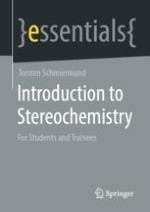Conformal, diastereomers, rotamers, tautomers, anomers: The multitude of terms used in stereochemistry quickly makes this subfield of chemistry confusing. In addition, there are different nomenclatures and different forms of representation (Fischer projection, Haworth ring formula, Newman projection). This essential deals with basic static stereochemistry and gives an overview of the different isomeric forms and nomenclatures. It is thus both a help and a reference book.
This Springer essential is a translation of the original German 1st edition essentials, Einführung in die Stereochemie by Torsten Schmiermund, published by Springer Fachmedien Wiesbaden GmbH, part of Springer Nature in 2019. The translation was done with the help of artificial intelligence (machine translation by the service DeepL.com). A subsequent human revision was done primarily in terms of content, so that the book will read stylistically differently from a conventional translation. Springer Nature works continuously to further the development of tools for the production of books and on the related technologies to support the authors.
